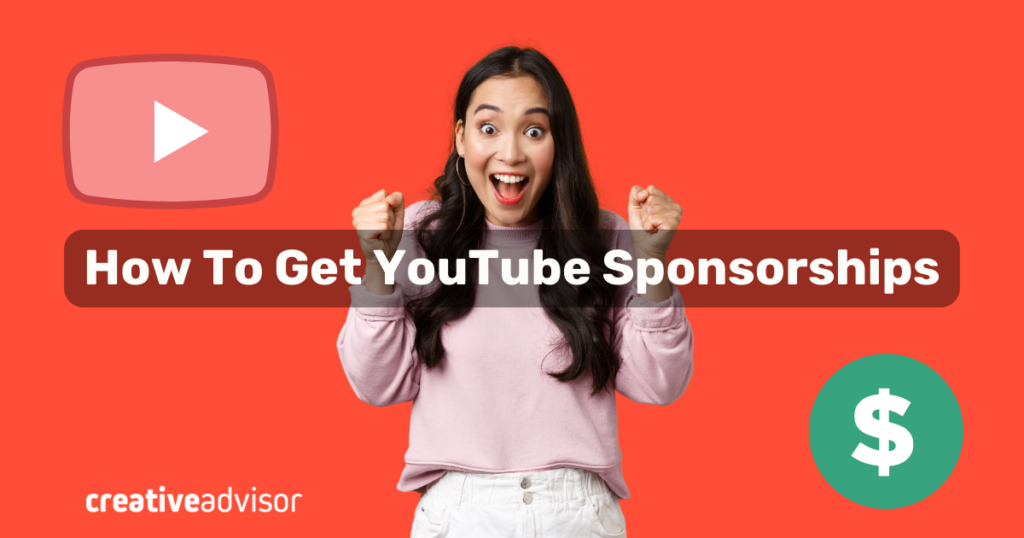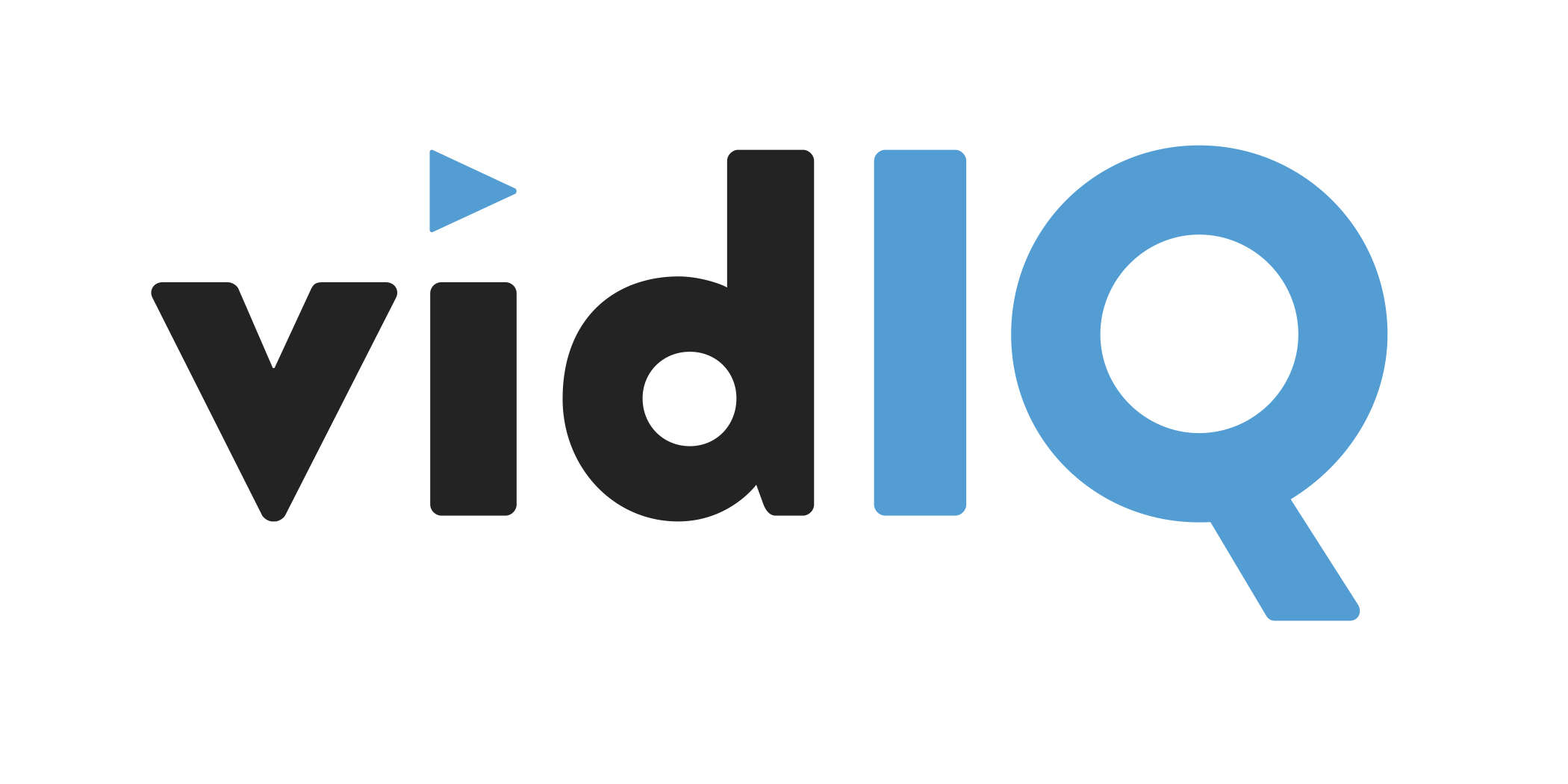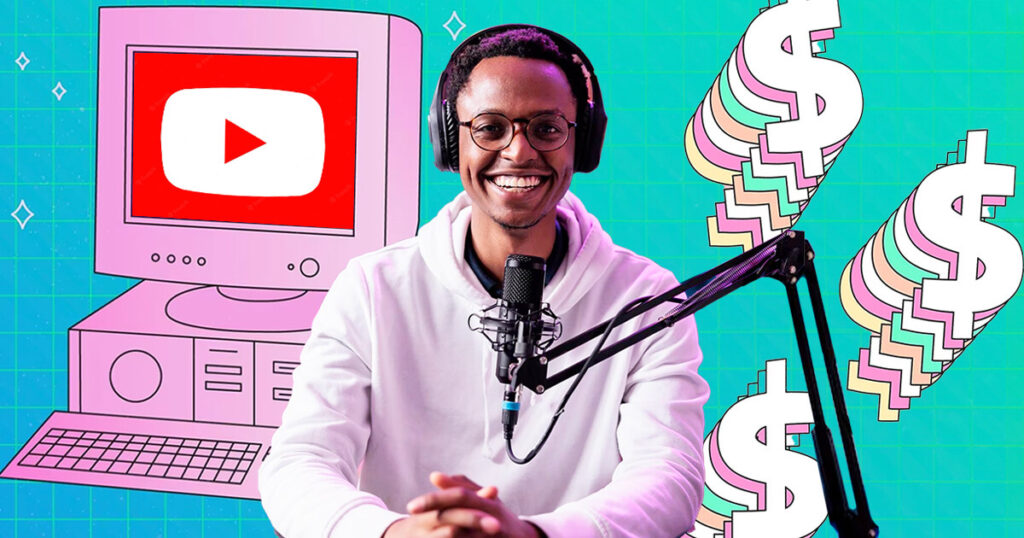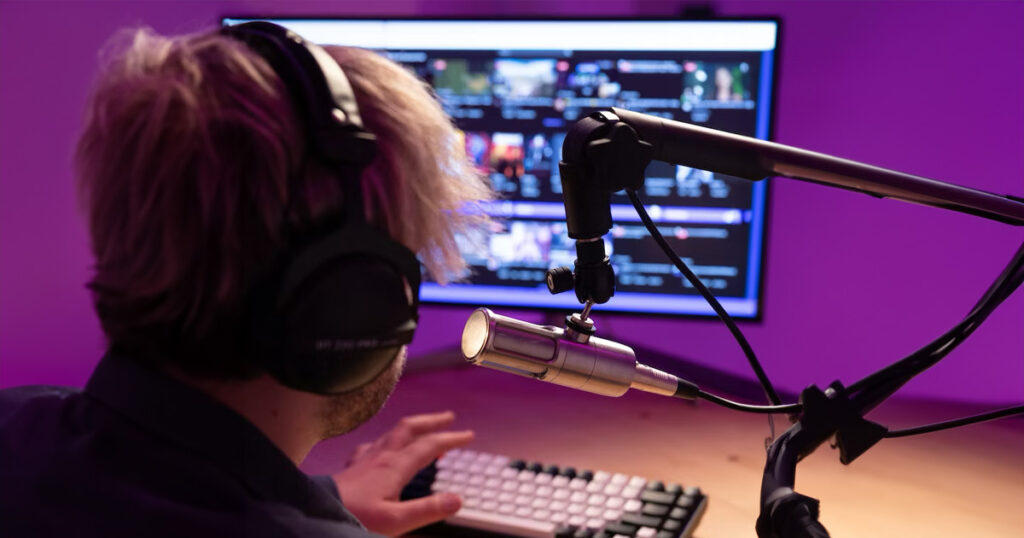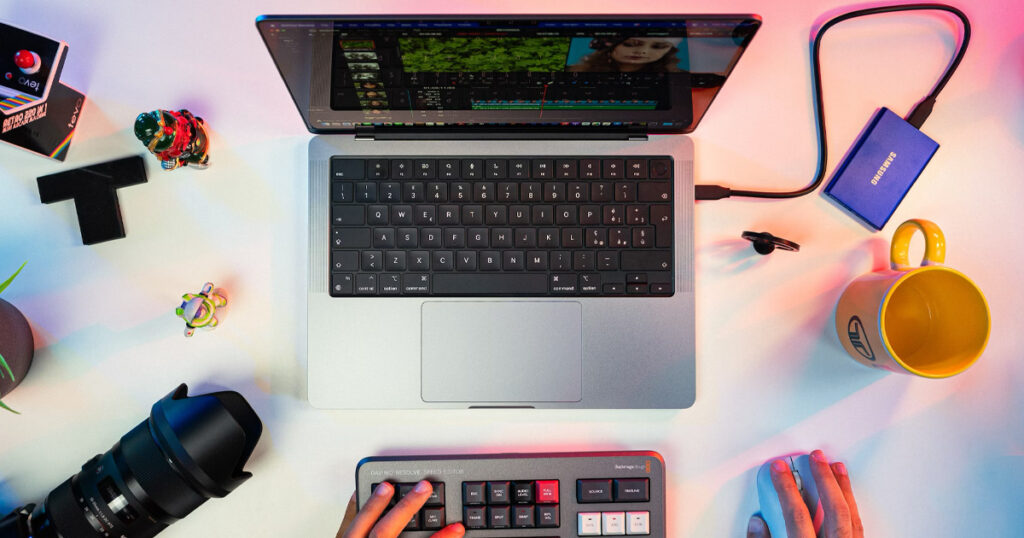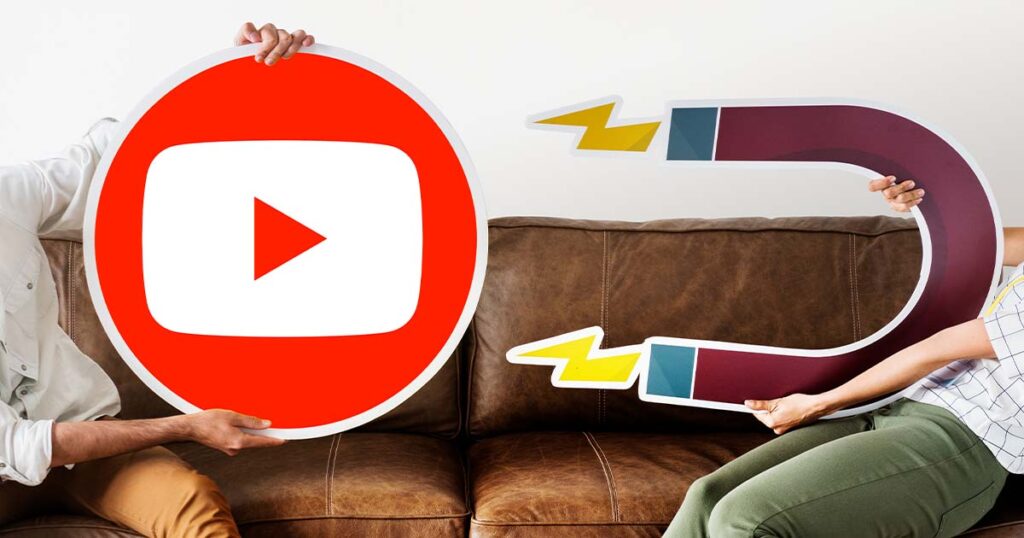From small-scale affiliate deals to expansive brand partnerships, sponsorships are among the best ways to make money on YouTube. By understanding how sponsorships work and how to get them, you’ll gain access to a new revenue stream that can be used to fuel your channel’s growth.
What are YouTube sponsorships and how do they work?
YouTube sponsorships are partnerships between a content creator and a brand. In this mutually beneficial relationship, the YouTuber promotes a brand’s product or service by integrating it into their content. In return, they receive compensation in the form of money, free products, or other benefits.
These partnerships can take various forms, but they typically include one or more of the following components:
- Product placement. This is when a creator features a sponsor’s product or service directly in their video. It can be subtle, like wearing a branded t-shirt, or more direct, like reviewing a product.
- Brand mentions. During a video, the creator will mention the sponsor’s name and discuss their offerings.
- Dedicated videos. Sometimes, a sponsorship deal involves creating an entire video around the sponsor’s product or service, such as a tutorial, unboxing, or a how-to guide.
- Sponsored segments. A portion of a video, such as the beginning or end, might be dedicated to talking about the sponsor.
- Affiliate marketing. Creators can include affiliate links in their video descriptions. When viewers click on these links and make a purchase, the creator earns a commission.
- Visuals and graphics. Sponsors’ logos or branded graphics may be included in the video content or as part of the video thumbnail.
- Discount codes. Creators often provide their viewers with a discount code for the sponsor’s products or services. This not only offers value to the viewers but also allows sponsors to track the effectiveness of the sponsorship.
4 Types of YouTube Sponsorships
Understanding the main types of YouTube sponsorships can set you on the path to forging meaningful and profitable partnerships with brands. The four primary sponsorship types available to YouTubers are affiliate sponsorships, product placement, sponsored content, and free product reviews.
Sponsorships are not just a revenue stream but a bridge between your audience and the sponsor’s products or services. Therefore, it’s important to carefully consider how each type of sponsorship aligns with your audience’s expectations from you and your channel.
Affiliate Sponsorships
Affiliate sponsorships are a win-win for creators and brands. You’re given a unique affiliate link or code for a product or service that you can feature in your video description. When your viewers click on the link or use the code to make a purchase, you earn a commission. It’s a simple way to monetize and connect your audience to products you trust and recommend.
Affiliate sponsorships are great for beginners and veterans alike because they’re easy to set up, and you don’t need to meet subscriber and watch hour minimums to get started. To be truly successful with affiliate sponsorships, however, you’ll need to make sure that you’re authentically promoting products that you believe in to your audience.
Product Placement
When you’re watching your favorite YouTuber and see them using a cool new gadget or wearing a stylish outfit, there’s a chance you’re seeing product placement in action. Product placement is when a company pays you to feature their product in a video. But unlike traditional commercials, these products are placed within the content naturally.
For example, a makeup artist might use a specific brand of eyeliner in their tutorial, or a tech vlogger might review the latest smartphone. The idea is to showcase the product in a way that feels like a normal part of the video.
Your audience comes to you for your unique voice and perspective, so any products featured should enhance that connection, not detract from it. The most successful product placements are those that naturally blend into your regular content.
Sponsored Content
Dedicated sponsored content is a specific type of video that’s all about a brand’s product or service. The entire video is centered around showcasing the features, benefits, and uses of what the brand is offering. And when done correctly, is both informative and entertaining for the people watching.
Sponsored content deals often come with better pay due to the nature of the video. However, if the video feels too much like an ad, or if it doesn’t align with what your audience expects from you, you should prepare for negative feedback. To be successful, you need to balance promoting the product with keeping the content engaging and true to your style.
Free Product Reviews
This type of content involves brands providing creators with free products in exchange for an honest review or feature in a video.The expectation isn’t that you’ll only sing praises; the brand is looking for exposure through your genuine feedback and audience reach.
For new YouTubers, free product reviews can be an excellent way to build relationships with brands and demonstrate your ability to produce valuable promotional content. As your channel grows, these initial free product reviews can pave the way for more substantial, paid sponsorship opportunities.
How much can you earn from YouTube sponsorships?
YouTubers can earn anywhere from a few bucks to tens of thousands of dollars from sponsorship deals. However, how much you can expect to make from YouTube sponsorships depends on several factors such as your channel’s niche, audience size, engagement rate, and brand fit.
Here’s a quick rundown of the factors that will likely dictate your earning potential:
- Channel niche. Higher paying niches, such as finance and health & wellness, command top-of-market sponsorship rates due to their purchasing power or specific audience demographics.
- Audience size. Generally, the larger your subscriber count, the higher your potential to earn from sponsorships.
- Engagement rate. High engagement rates are more attractive to sponsors because they indicate a loyal and active audience.
- Content quality. High-quality, professional content can attract higher-paying sponsorships.
- Brand fit. If your brand aligns with the sponsor’s target market they’re more willing to pay a premium.
- Negotiation skill. Your ability to negotiate terms can also significantly impact your sponsorship income.
Finally, the specific type of sponsorship can greatly affect your earnings. Based on the sponsorship types mentioned earlier, let’s breakdown the earning potential and factors that influence each type.
Related: How to Become a YouTuber in 12 Steps
Earning Potential of Affiliate Sponsorships
Affiliate earnings are typically commission-based, meaning your income will directly correlate with sales generated through your affiliate links. The percentage can range from as low as 1% to upwards of 50%, depending on the company and product. For example, if you’re promoting a $100 product with a 10% commission rate, you’ll earn $10 per sale. If 100 viewers purchase the product via your link, that’s $1,000 in your pocket.
Here are some examples of real affiliate programs from across the web:
| Affiliate program | Commission structure | Sign up link |
|---|---|---|
| Amazon Associates | Up to 10% depending on category | |
| eBay Partner Network | Up to 4% depending on category | |
| Etsy Affiliates and Creators | 4% | |
| Express VPN | Up to $36 depending on package | |
| Shopify | A recurring commission equal to 20% |
The key to maximizing earnings here is a combination of choosing products that resonate with your audience, and effectively integrating the affiliate links into your content.
Earning Potential of Product Placement
Product placement deals can be more lucrative, often offering a flat rate in addition to potential performance bonuses. The rates for product placements will depend on your reach, the length of the exposure, and the brand’s budget.
The amount of money that a company is willing to pay for a product placement will also depend on the overall objectives of the company’s marketing campaign. For example, a company might be willing to pay more for a product placement in a video that will generate a lot of buzz and awareness for their brand.
Unfortunately, finding an average dollar figure for YouTube product placement has proven to be elusive. But if a product placement deal does come your way, make sure to ask what the brand has paid for similar deals in the past.
Earning Potential of Sponsored Content
Dedicated sponsored posts are where the big bucks often come in. Brands are paying for your full attention on their product or service, which means they’re willing to pay more for it. Depending on your channel’s size and engagement, prices can range significantly.
Smaller channels might earn between $500 to $2,000 per dedicated video, while larger channels can see figures from $5,000 to $20,000 and upwards. Some top-tier YouTubers can earn even more, especially if the brand sees a strong alignment with their product and the creator’s audience.
How to Get YouTube Sponsors
When it comes to reaching out to potential sponsors, the process can seem intimidating. But with the right approach, you can effectively engage with brands and create opportunities for partnerships.
The most straightforward way to find sponsors is to join YouTube’s native sponsorship program, BrandConnect. But if you’re looking to take matters into your own hands, here are some helpful steps to get started:
- Research potential sponsors. Start by identifying brands that align with your channel’s content and values. Research their past sponsorships, marketing campaigns, and target audience to ensure a good fit.
- Build your target list. Based on your research, create a list of potential sponsors, including contact information for their marketing or PR departments. Prioritize the list based on the relevance and likelihood of their interest in your channel.
- Craft personalized pitches. Before you start reaching out, make sure to personalize your pitches. Mention specific reasons why a partnership with your channel would benefit the brand, referencing your media kit for supporting data.
- Utilize social media. Social networks like LinkedIn can be a powerful tool for connecting with brand representatives. Set up your profile so that it looks professional, and use it to network with marketing managers and other decision-makers.
- Start reaching out. Once you have everything you need its time to start reaching out. Whether it’s an email, a phone call, or a direct message, remember to always communicate professionally. First impressions count, and courteous communication can set the tone for a potential partnership.
- Follow up. If you don’t hear back after your initial contact, it’s appropriate to follow up. Send a polite reminder reiterating your interest in working with the brand.
- Be prepared for rejection. Not every brand will be interested or have the budget for sponsorships. Be prepared for rejection, and don’t let it discourage you. Learn from any feedback and move on to the next opportunity.
- Negotiate terms clearly. Once a sponsor shows interest, be clear about what you can offer and what you expect in return. Discuss deliverables, compensation, and any legal requirements upfront.
- Keep relationships warm. After connecting with a sponsor, whether or not the partnership materializes, maintain the relationship. Check in periodically, share updates about your channel, and keep them in mind for future opportunities.
Join the YouTube Sponsorship Program
YouTube itself offers opportunities for creators to connect with brands. One way is to apply to YouTube’s official BrandConnect program. Formerly known as FameBit, YouTube BrandConnect is a platform that connects creators and brands by allowing creators to pitch directly to brands.
According to YouTube’s help center, BrandConnect is in currently in Beta and only available to a small group of creators at this time. You’ll also be required to meet the following eligibility criteria in order to apply:
- Age requirement. You must be at least 18 years old.
- Location. You need to be in the U.S. or India.
- YouTube Partner Program. You must be a member of the YouTube Partner Program.
- Community Guidelines. Your channel should have no active Community Guidelines strikes.
Preparing Your Channel for YouTube Sponsorships
Securing a sponsorship deal can be a game-changer for your YouTube channel. Not only is it a great source of income; it’s also a huge legitimizer for your channel. However, before you’re start reaching out to brands make sure you’re presenting in the best possible way.
Companies are looking to partner with YouTubers who demonstrate professionalism, have a clear brand identity, and maintain an engaged audience. Here’s how to prepare your channel to be sponsorship-ready:
- Streamline your channel’s branding
- Create high-quality content
- Build an engaged following
- Develop a media kit
Streamline Your Channel’s Branding
For YouTube creators, branding is much more than a logo or a catchy name; it’s about the story you tell and the image you project. Strong branding can make your channel memorable and stand out to potential sponsors.
Here are some steps you can take to position your channel’s branding to attract sponsors:
- Define your brand identity. Define what your channel stands for. What’s your mission? Who’s your target audience? What tone and personality do you want to convey? Your brand identity will guide all your branding decisions, from visuals to voice.
- Update your visual elements. Your channel’s visual elements include your profile picture, banner, and video thumbnails. Ensure they are all high-resolution, follow a consistent style, and reflect your channel’s personality.
- Craft a compelling channel description. Your ‘About’ section is an opportunity to tell potential sponsors and new viewers who you are and what they can expect from your channel.
- Standardize your thumbnails. Thumbnails are the billboards for your videos. Having a consistent style makes your content instantly recognizable to potential sponsors.
Create High-Quality Content
Content is king, and its quality can make or break a sponsorship deal. Invest time in improving your video production skills, such as editing, sound quality, and lighting. High-quality makes you look more professional, and shows sponsors that you’re serious about your craft.
The following are some of the ways you can elevate your content quality, and become a magnet for sponsors:
- Invest in good equipment. While you don’t need the most expensive gear, quality equipment can make a significant difference. A good camera, microphone, and proper lighting can transform the feel of your videos, making them more professional.
- Learn basic videography techniques. Understanding the basics of video composition, such as the rule of thirds, proper framing, and smooth transitions, can greatly enhance the visual appeal of your content.
- Edit your videos tightly. Using editing software to cut out unnecessary parts, add music, and create engaging graphics. Being able to create engaging videos is especially important for sponsored content opportunities.
- Develop your on-camera presence. Your personality is a big part of your content’s quality. Practice speaking clearly and confidently, and let your enthusiasm shine through.
Build an Engaged Audience
Sponsors love an engaged audience. Focus on growing your subscriber base and encouraging viewers to interact with your content through likes, comments, and shares. An active community signals to YouTube sponsors that your audience values your content and is more likely to heed your product recommendations.
Here’s how you can build an audience that not only watches but interacts with your content:
- Understand your viewers. Use YouTube Analytics to get to know who your viewers are, what they like, and when they’re most active. Tailor your content to meet their interests and viewing habits.
- Encourage viewer interaction. Always encourage viewers to like, comment, and share your videos. Engagement starts with a call to action, so don’t be shy about asking for that interaction directly.
- Respond to comments. Make it a habit to respond to comments on your videos. This interaction helps build a community and shows that you value your viewers’ opinions and feedback.
- Collaborate with other creators. Collaborations can introduce your channel to new audiences and bring a fresh perspective to your content. Choose collaborators whose audiences overlap with your target demographic.
- Be consistent with your upload schedule. Consistency helps build a routine for your viewers and can lead to higher anticipation and engagement for your new content.
Recommended for YouTube SEO
Price
Get started for free
Bonus offer
7 day free trial for Boost plan
Key features
Keyword research
Competitor analysis
AI tools
Develop a Media Kit
A media kit is an essential tool for YouTubers seeking sponsorships. It acts as your channel’s portfolio, showcasing your value to potential sponsors. For beginners, creating a media kit might seem daunting, but it’s a critical step towards professionalizing your approach to sponsorships.
Here are some practical steps to crafting a media kit that’ll help you stand out:
- Compile your channel stats. Gather key metrics such as subscriber count, average views per video, engagement rate, and audience demographics. These figures will demonstrate your channel’s reach and influence.
- Highlight your unique selling points (USPs). What makes your channel special? Identify your USPs and make sure they’re front and center in your media kit. This could be your niche expertise, a highly engaged community, or a unique content style.
- Include testimonials and success stories. If you’ve had successful brand partnerships or collaborations, include testimonials and case studies that highlight these successes. This provides social proof of your effectiveness as a partner.
- Showcase your best content. Select a few of your best videos that exemplify your content quality and engagement. Include links and brief descriptions that convey the context and impact of each piece.
- Design for impact. Your media kit should be visually appealing and reflect your channel’s branding. Use a clean layout, readable fonts, and include your logo and color scheme.
- Be concise. While it’s important to include detailed information, keep your media kit concise. Aim for a balance between being informative and being succinct.
- Make it customizable. Be prepared to tailor your media kit for specific sponsors or campaigns. Having a flexible template can allow you to emphasize different aspects of your channel as needed.
Policies and Guidelines to Know Before Getting Started
Community Guidelines
YouTube’s Community Guidelines are designed to ensure the platform remains a safe and respectful environment for all users. Here are some key points that YouTubers should be aware of, especially when dealing with sponsorships:
- Transparency and disclosure. Always disclose any form of sponsored content to your viewers. This is not just a best practice but a requirement to maintain transparency and trust.
- Avoid misleading content. Titles, descriptions, tags, and thumbnails should accurately represent the content. Misleading metadata can result in video removal or other penalties.
- Respectful content. Avoid content that promotes hate, violence, or discrimination. That kind of content can lead to strikes or even channel termination.
Monetization Policies
For YouTubers looking to monetize their content, understanding YouTube’s Monetization Policies is necessary. The following are important guidelines to keep in mind:
- Ad-friendly content. Ensure that your content adheres to YouTube’s advertiser-friendly content guidelines. This includes avoiding excessive profanity, controversial issues, and harmful or dangerous acts.
- No overlapping ads. If a video contains sponsored segments, ensure that these don’t overlap with YouTube’s own ads to prevent a cluttered viewing experience.
- Exclusive agreements. YouTube prohibits creators from entering into agreements that prevent specific advertisers from displaying ads on their videos.
Frequently Asked Questions (FAQs)
How many subscribers do I need to attract sponsors?
Size does matter, but it’s not the only factor. While a high subscriber count can be enticing for brands, they also value engagement, niche content, and authenticity. Even smaller channels with a dedicated and engaged audience can attract sponsors. The key is to highlight what makes your channel unique and how it can offer value to the brand.
Will taking on sponsors negatively affect my brand?
Sponsorships, when done right, can enhance a channel’s brand. However, it’s crucial to maintain transparency and authenticity. Always disclose sponsored content to your audience and ensure that the collaborations align with your channel’s values. Misleading or excessive sponsorships can alienate subscribers, so it’s essential to strike a balance and prioritize the trust of your audience.
